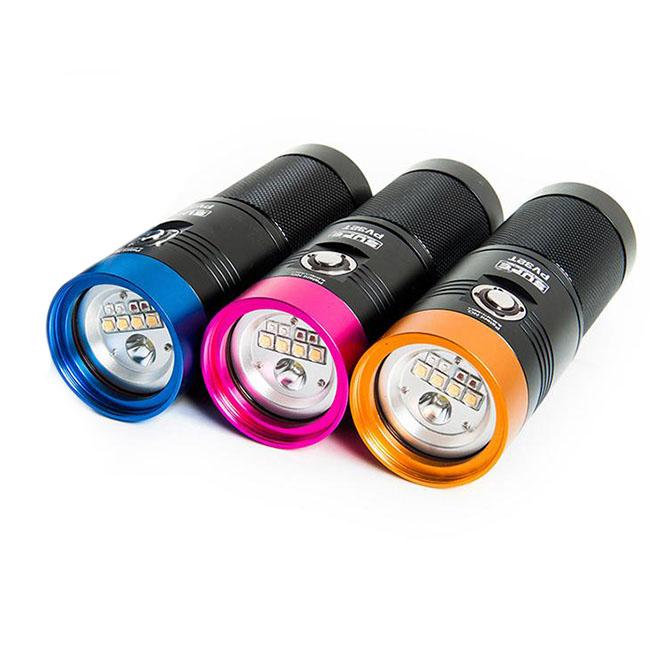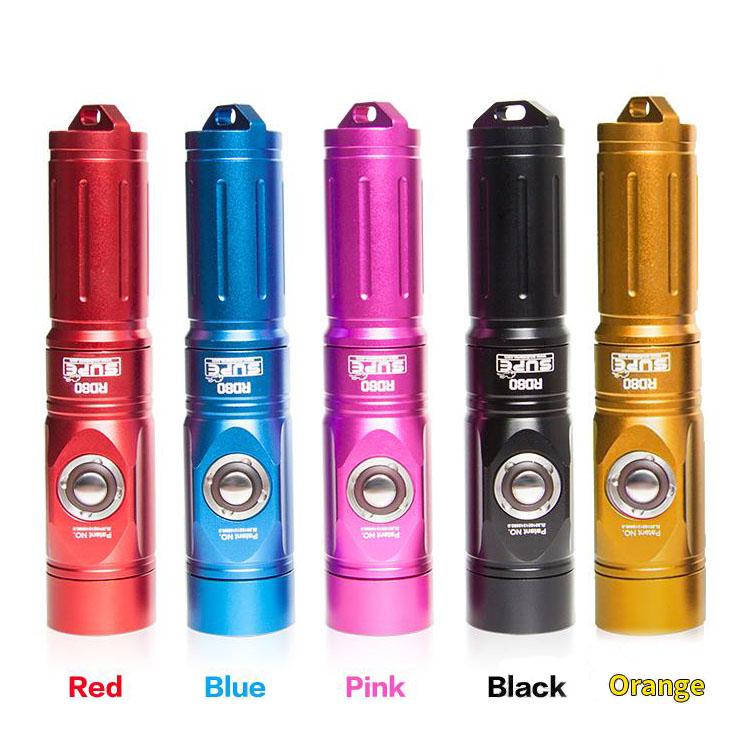Diving Lights
10 artículos
10 artículos
We have two main categories of lights used in underwater illumination-- Spot and Floodlights. Traditionally, spotlights are quite common for primary dive lights due to the narrow (yet powerful) beam to communicate from large distances. Floodlights are often used to illuminate a specific scene; however, make for poor communication using the light as a signaling device.
When trying to capture the real colors during an underwater scene, we need to incorporate artificial lighting systems in our photography and videography. There are two primary types of lighting used underwater, Strobes and Continuous Light, to choose from.
If you are a photographer with a mirrorless or DSLR camera, you'll likely be selecting a strobe light. If you plan to capture video, you'll want to select a continuous. For our professionals, we often use powerful video lights for photography as we can illuminate the scene and set up our subjects better. If you can't decide, check out our multipurpose lights and capture the best of both worlds.
Ótimo atendimento..super recomendo
The Bolt is Excellent
This people has a great service really precise with the mixes
So far my favorite fins happy the shop have best products and customer service
Ryan did an unscheduled service on my regs after I damaged them .
He returned them to pristine condition and in short order.
Dealing with Aqui is always a pleasant experience.
Would and do recommend them to all!
I went to Aqui because I met Landon at another dive shop about a 1-1/2 years ago, and he ended up expertly fixing my regulator and helping me replace a faulty first stage with a new Deep 6 first stage.
I wasn't permanently living in the neighborhood at that time, but since then I've moved to Ft Lauderdale, and Aqui has quickly become my go-to dive shop.
Mason is always there with a smile and a readiness to help with expertise, straight-forward advice, and mechanical know-how. After talking with him and Tyler, I just bought two new Deep 6 regulators and he made sure everything was working properly before my shore dive in LBTS last weekend.
I can't recommend Aqui highly enough!
These are perfect for hard-clipping into ur dive buddy
Excellent and premium customer service
I had originally been looking that the Zen deluxe because of hearing so many stories from people having trouble getting their single piece harness adjusted properly. After a lengthy phone call with Ryan I decided instead to opt of the standard version with the upgraded, limp webbing. After initial adjustments in my living room I dove one time and had to male only a small.adjustment in the crotch strap.
I never feel this system on my person except walking from my seat on the boat to the edge to jump in. It keeps you in whatever position you want and if horizontal, it keeps me perfectly level. I opted for the aluminum backplate. With 3mm suit, shark skin vest and shark skin hood I require zero lead and actually am probably still a few pounds negative.
I'm 6' 0" and 200 lbs with 10ish% bf.
Love these bolt snap 10/10 better than anything else out there
Sign Up to receive the latest news and updates, exclusive offers, event invites, and trips. Save on Personal gear packages and training with our awesome bundled deals!





















